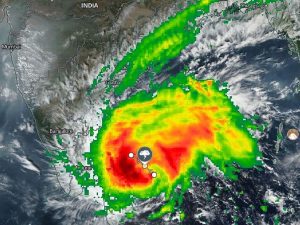Quantum Gravity Gradiometer:

NASA scientists have proposed an innovative use of cold atom-based Quantum Gravity Gradiometers (QGGs) to measure how the Earth’s mass distribution is changing, especially due to climate change.
- NASA scientists propose placing a Quantum Gravity Gradiometer onboard a satellite to detect minute gravitational changes.
- In a QGG, atoms of a specific element are cooled to near absolute zero in a vacuum, transforming them into wave-like states.
- Lasers manipulate these atoms, and the atoms undergo a phase shift directly related to the gravitational force acting upon them.
- This setup can detect differences in acceleration as small as 10⁻¹⁵ m/s² over a distance of just 1 meter.
- This includes estimating the mass of large formations like the Himalayas and monitoring the movement of water, ice, and geological materials with extreme precision from low Earth orbit.
- The gravitational force experienced at different points on the Earth’s surface is not uniform; it depends on the mass of nearby objects.
- For instance, gravitational force near a mountain range is stronger than in less dense regions, like cities or flat plains.
- Gravity Gradiometer is a highly sensitive instrument that measures how gravitational acceleration changes from one place to another.
- For example, when a ball is dropped, the acceleration due to gravity can vary slightly depending on local mass differences.
- These devices are used in resource exploration—like locating hydrocarbon deposits, as oil and gas are less dense than surrounding rock.




